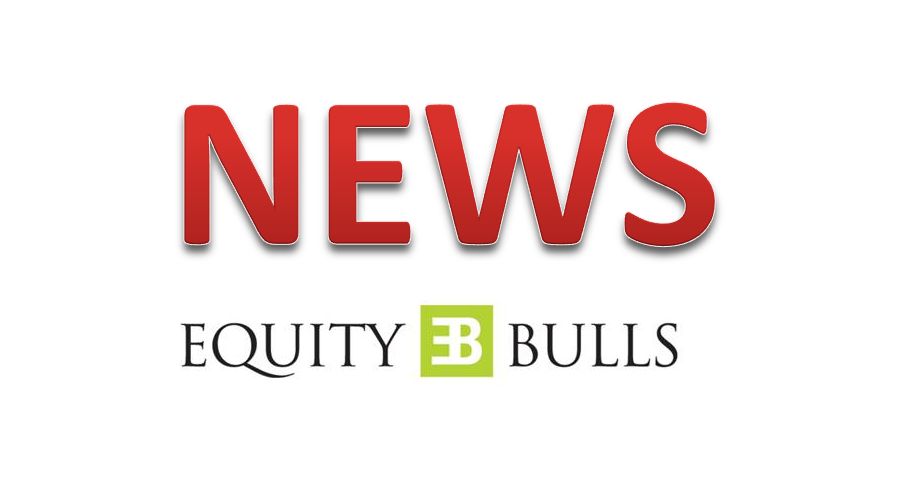 Highway Infrastructure Ltd receives LOA worth ₹11.76 Crores for Toll Operations Contract by NHAI
Highway Infrastructure Ltd receives LOA worth ₹11.76 Crores for Toll Operations Contract by NHAI BEML enters into MoU with Tesmec, S.p.A Italy
BEML enters into MoU with Tesmec, S.p.A Italy Stallion India Fluorochemicals Commences Groundwork for R-32 Manufacturing Facility in Bhilwara, Rajasthan
Stallion India Fluorochemicals Commences Groundwork for R-32 Manufacturing Facility in Bhilwara, Rajasthan Crompton Greaves Consumer Electricals Ltd receives LOA from NREDCAP for EPC contracts
Crompton Greaves Consumer Electricals Ltd receives LOA from NREDCAP for EPC contracts Kallam Textiles Ltd receives interest subsidy from Government of Andhra Pradesh
Kallam Textiles Ltd receives interest subsidy from Government of Andhra Pradesh
Research
Yes Bank - Aggravating asset quality fears outweigh operating performance turnaround - ICICI Securities
Posted On : 2021-01-25 10:46:34( TIMEZONE : IST )

Yes Bank's Q3FY21 earnings aggravate fears about its asset quality issues. Portfolio vulnerability becomes visible from: 1) spike in standstill NPLs (from 1.5% to 5%), SMA-2 pool (from 2.4% to 4%), SMA-1 (from 1.6% to 7.3), and 2) additional restructuring outside of this pool at 3.2% over and above the labelled non-performing assets at 22%. We revise estimate of cumulative slippage run-rate to >13% (earlier 10%) and cumulative credit cost to 6% (5%) over FY21E/FY22E. Elevated credit cost offsets operating metrics improvement, leading to earnings cut. The quarter had positive surprises in the form of new CASA accounts (220k added in Q3FY21), retail + SME disbursements outpacing the set target (of Rs120bn), retail fee traction (up 38% QoQ), cash recoveries of Rs15bn, treasury profit of Rs5.4bn, and cost containment (down 8% QoQ). However, asset quality fears outweigh the turnaround in operating metrics and we expect the recently proposed equity raise to depress RoE. Maintain HOLD with revised TP of Rs16 (earlier Rs17). Key risks: 1) asset quality issues leading to further capital erosion; 2) lock-in of shares and lower float boosting stock value beyond fundamentals.
- Asset quality concerns merely being deferred and seem far from over: Yes Bank's stress pool aggravate fears around its asset quality. Portfolio vulnerability becomes visible from: 1) spike in standstill NPLs to 5% (restructuring invoked - 15% of this pool), SMA-2 at 4% (restructuring invoked - 47%), SMA-1 at 7% (20% restructuring invoked); 2) additional restructuring executed at 2.5% plus restructuring invocation of 0.7% (outside of standstill, SMA-1/2 pool); 3) labelled non-performing assets at 22%. We therefore estimate a cumulative slippage run-rate of >13% and cumulative credit cost of >6% over FY21E/FY22E and expect depressed earnings.
- Collection efficiency still lagging in SME and corporate segments: Collection efficiency in retail improved to 96% (from 89% in September) against 97% pre-Covid. However, MSME collection efficiency still lags at 94% of pre-Covid era. Also, collection efficiency in the corporate segment, which comprises 52% of the book, remains much lower. While corporate stress was largely anticipated, we need to watch out for behaviour of retail and MSME portfolios - almost 3% of which is already in standstill NPLs and 1% in SMA-2 (excluding the restructured invocation).
- Retail and MSME segments - emerging pillars of credit: Yes Bank's medium-term objective is to build a granular portfolio skewed towards retail and MSME. Retail disbursements surpassed its own target and 85% of origination is towards secured lending - Rs74.7bn (almost double QoQ). Retail now constitutes 28% of the book. SME disbursements at Rs44.5bn are higher than pre-Covid levels.
- Deposit franchise is gaining strength as the bank opened ~220,000 new CASA accounts in Q3FY21 (vs 150k in Q2FY21), surpassing the pace witnessed pre-Covid. Overall deposits grew 8% QOQ and 39% YTD in 9MFY21 taking the C/D ratio to 116% from 163% as at FY20-end. LCR for the bank stood at 111% as at Q3FY21-end.
- Margins buoyed by recoveries and lower deposit cost: Surprisingly, margins further expanded 30bps to 3.4% (over the higher base set in Q2FY21 of 3.1% vs 1.9% in Q4FY20). Interest recoveries of Rs5.4bn (from overall cash recoveries of Rs15.1bn) aided the improvement. Besides, improved deposit franchise supported decline in cost of deposits by another 30bps (over and above 34bps in Q2FY21). However, interest is still being accrued on the vulnerable pool that may eventually pressurise yields as and when stress is recognised in coming quarters.
- Retail fee income surprises positively; treasury profits lend support: Key driver of other income was a 38% QoQ rise in retail fee income, which is a surprise due to significant step-up in disbursements. Third-party sales is expected to further accelerate in the coming quarters driven by new partnerships (now six in total across life and general insurance vs two earlier). Further, investment profits of Rs5.4bn lend support to other income.
- Assessing medium to long term evolution & market positioning: Fundamentally, we need to weigh interim progress against the medium to long term franchise sustainability, stability and scalability. The granular deposit base (retail TD, CASA, etc.) and loan profile (retail, MSME, etc.) the bank aims to build in the medium term is an extremely competitive task and will come with higher opex and at lower spread. We do feel the revamped leadership with Mr. Prashant Kumar at the helm, leveraging on backing of leading shareholder banks, with changed governance and underwriting framework, is stabilising and turning around Yes Bank from the current downcycle. However, it will evolve more like a 'me-too' bank with industry average business franchise and profile. It also becomes important to appraise its business positioning - market acceptability, stakeholders' confidence/trust especially as a standalone bank and how shareholding/structure will look 3-5 years down the line - limited visibility as of now.
Shares of YES BANK LTD. was last trading in BSE at Rs.17 as compared to the previous close of Rs. 17.25. The total number of shares traded during the day was 33962604 in over 50420 trades.
The stock hit an intraday high of Rs. 17.5 and intraday low of 16.8. The net turnover during the day was Rs. 579039479.
